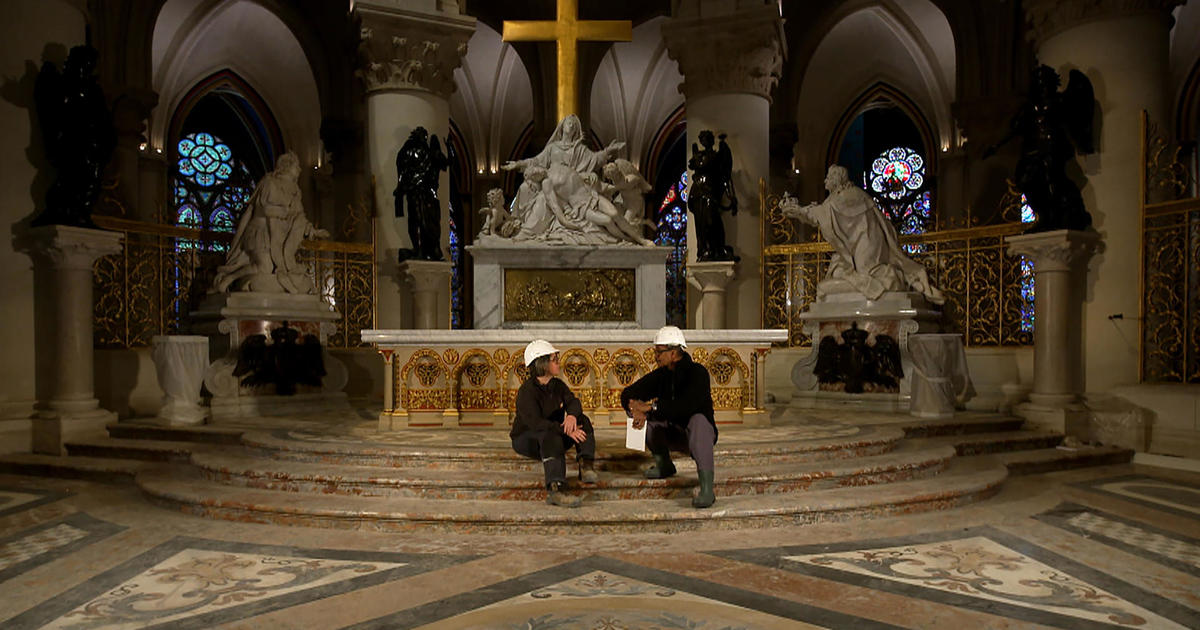Reviving a Masterpiece: The Unsung Heroes Behind Notre Dame’s Restoration
In the wake of the catastrophic fire that engulfed Notre Dame Cathedral on April 15, 2019, the world watched in horror as flames consumed the iconic spire and roof of this centuries-old architectural marvel. Yet, amid the devastation, a remarkable journey began—one of resilience, dedication, and artistry as a diverse group of experts rallied to restore this historic treasure. This article explores the unsung heroes behind Notre Dame’s restoration, highlighting their expertise, passion, and the broader implications of their work.
The Immediate Aftermath
Following the fire, the immediate response involved securing the site and assessing the damage. Firefighters and emergency responders worked tirelessly to extinguish the blaze, but the task of restoring Notre Dame was just beginning. The French government and various organizations swiftly mobilized, pledging millions in funding to facilitate the restoration process. However, it was the skilled artisans, craftsmen, and historians who would play the most crucial role in reviving the cathedral.
The Team Behind the Restoration
At the heart of the restoration are the professionals whose deep knowledge of Gothic architecture and historical preservation is indispensable. These individuals include:
- Architects: Specializing in historical buildings, they are responsible for ensuring that the restoration adheres to the original design and materials.
- Artisans: Stone masons, carpenters, and metalworkers who possess traditional skills that have been passed down through generations.
- Conservationists: Experts in preserving cultural heritage who analyze materials and techniques to prevent further deterioration.
- Historians: Researchers who provide valuable context and knowledge about the cathedral’s history and architectural significance.
Architectural Integrity
One of the primary challenges faced by the restoration team is maintaining the architectural integrity of Notre Dame. The cathedral, a masterpiece of Gothic architecture, features intricate designs, flying buttresses, and stunning stained glass windows. Each aspect of the structure reflects the artistry of its time and must be treated with the utmost respect during restoration. Architects like Philippe Villeneuve, the chief architect of historical monuments in France, have been pivotal in ensuring that the restoration stays true to the original vision of Notre Dame.
Traditional Craftsmanship
The restoration also emphasizes the importance of traditional craftsmanship. The use of original materials is vital to authentically restore Notre Dame. This commitment is evident in the sourcing of limestone from the same quarries used in the original construction. Skilled artisans, including stone carvers and woodworkers, are essential in replicating the intricate details that define the cathedral’s beauty. Their work often requires years of training and experience, underscoring the importance of preserving these traditional skills.
The Role of Technology
While traditional craftsmanship plays a crucial role in the restoration, modern technology also significantly enhances the project. Techniques such as 3D scanning and modeling allow restoration teams to create accurate replicas of damaged sections. This technology aids in planning the restoration meticulously, ensuring that every element fits seamlessly into the existing structure. Furthermore, drones equipped with cameras have been used to assess the cathedral’s condition from angles that are otherwise difficult to reach, providing invaluable data for the restoration team.
Community Involvement and Funding
The restoration of Notre Dame has also sparked a global conversation about cultural heritage and community involvement. Fundraising efforts have garnered over €800 million from donors worldwide, showcasing the cathedral’s significance as a symbol of not just France, but of human history and resilience. Various organizations, including the Friends of Notre-Dame de Paris, have played a vital role in mobilizing resources and raising awareness of the restoration effort.
Local communities have also been engaged in the process, with volunteers contributing their time and skills to support restoration initiatives. Educational programs aimed at teaching younger generations about the importance of preserving cultural heritage have emerged, fostering a sense of pride and responsibility towards historical sites.
Broader Implications of Heritage Restoration
The restoration of Notre Dame extends beyond its physical structure; it raises important questions about cultural identity, historical preservation, and the role of heritage in society. As cities around the world grapple with the challenges of modernization, the revival of Notre Dame serves as a poignant reminder of the value of preserving history amid change. It highlights the need for sustainable practices in restoration, ensuring that future generations can appreciate and learn from these architectural wonders.
Lessons for Future Restoration Projects
As Notre Dame continues its restoration journey, several lessons can be gleaned that are applicable to future heritage projects:
- Collaboration is Key: Successful restoration requires teamwork among architects, artisans, conservationists, and historians.
- Respect for Tradition: Balancing modern techniques with traditional methods is essential for preserving historical integrity.
- Engagement with the Community: Involving local communities fosters a sense of ownership and pride in cultural heritage.
- Awareness of Cultural Significance: Restoration efforts should communicate the broader implications of cultural heritage to a global audience.
Conclusion
The restoration of Notre Dame Cathedral is a monumental undertaking that embodies the spirit of resilience and collaboration. As the dedicated individuals behind this project work tirelessly to breathe new life into this historic treasure, their stories and contributions remind us of the importance of preserving our cultural heritage. The journey of rebuilding Notre Dame is not just about restoring a building; it is about reviving a symbol of hope, unity, and the enduring power of human creativity.
To stay updated on the progress of Notre Dame’s restoration, you can visit the official website of Notre-Dame de Paris here or learn more about the architectural significance of the cathedral in related articles here.
See more BBC Travel World



